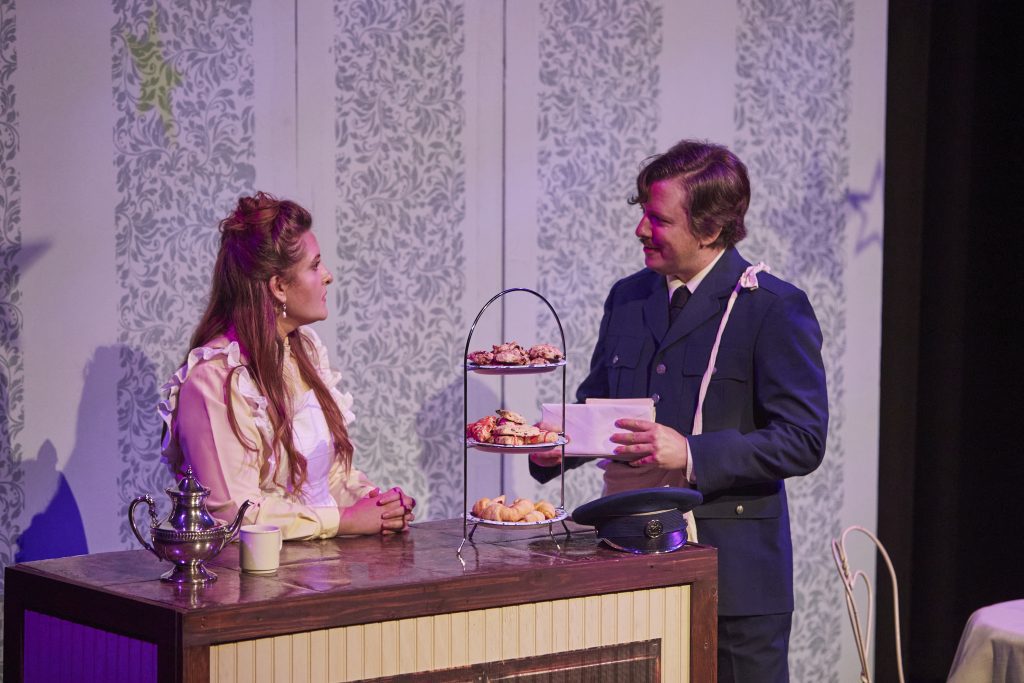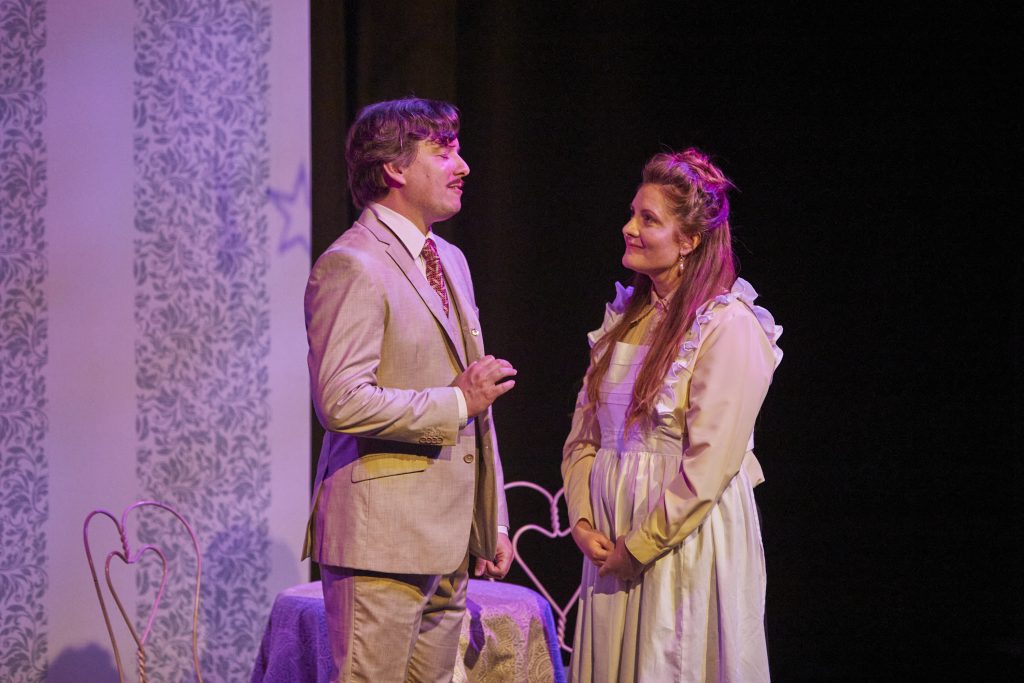Notes from the Costume Room
If you’ve seen our play, Father Brown, you’ll have noticed the long skirts and ruffles on the ladies, and maybe the men’s jackets buttoned to the sternum or throat rather than at the navel. Welcome to the Edwardian era in England, which spanned 1901 to about 1910! King Edward VII was on the throne.
Since this is a play and not a documentary or a movie, we get to take special privileges in costuming while still getting across to the audience the time period in which the play is set. The director and the costumer start by discussing the director’s vision and how the costumer can make that vision come to life on the stage.
In this particular time period, a woman running a business, such as the tea shop owner in Father Brown, would wear an ankle-length black skirt and a white, ruffled blouse that buttons up to the top of her neck. Add on a ruffled apron and she’s ready for work.
Her underlings would likely wear black blouses rather than white, although this wasn’t a strict rule. Notice that Laura Galloway, who ran the bakery that her father owned, might be considered a hired underling since she didn’t own the bakery, but she wore a cream blouse instead.
This is where a change from historic rules comes in. Lauren Nichols, who is the director, pointed out that since Laura is the daughter of a prominent doctor, it would make sense for her to wear something that portrays a little more privilege, so, we put away the stark black and white blouses and went with a cream one.
This would seem to be a small thing, but it is the sum of the small things that establishes the intended mood on the stage.


Another place where color helps to establish the mood is in the wardrobe changes in Flambeau. In his earlier years when he was a committed thief, I gave him dark costumes, but changed to a lighter one as he began to “see the light.” This makes sense since while “at large” he was first disguised as a priest and then as a postman, but after some years passed and he wanted to live a respectable life, I gave him a light-colored suit, reflecting his internal change.
The Edwardian period had many fashion rules, but as a theater costumer, I can work within those boundaries while also displaying the personalities and growth of characters.
Mary Swerens, Lead Costumer
Performances Sept 27, 28, 29
Friday/Saturday curtain 7:30 PM
Sunday matinee curtain 2:30 PM
Tickets available online or at the door
Adult $22, Senior(60+) $19, Student $15
